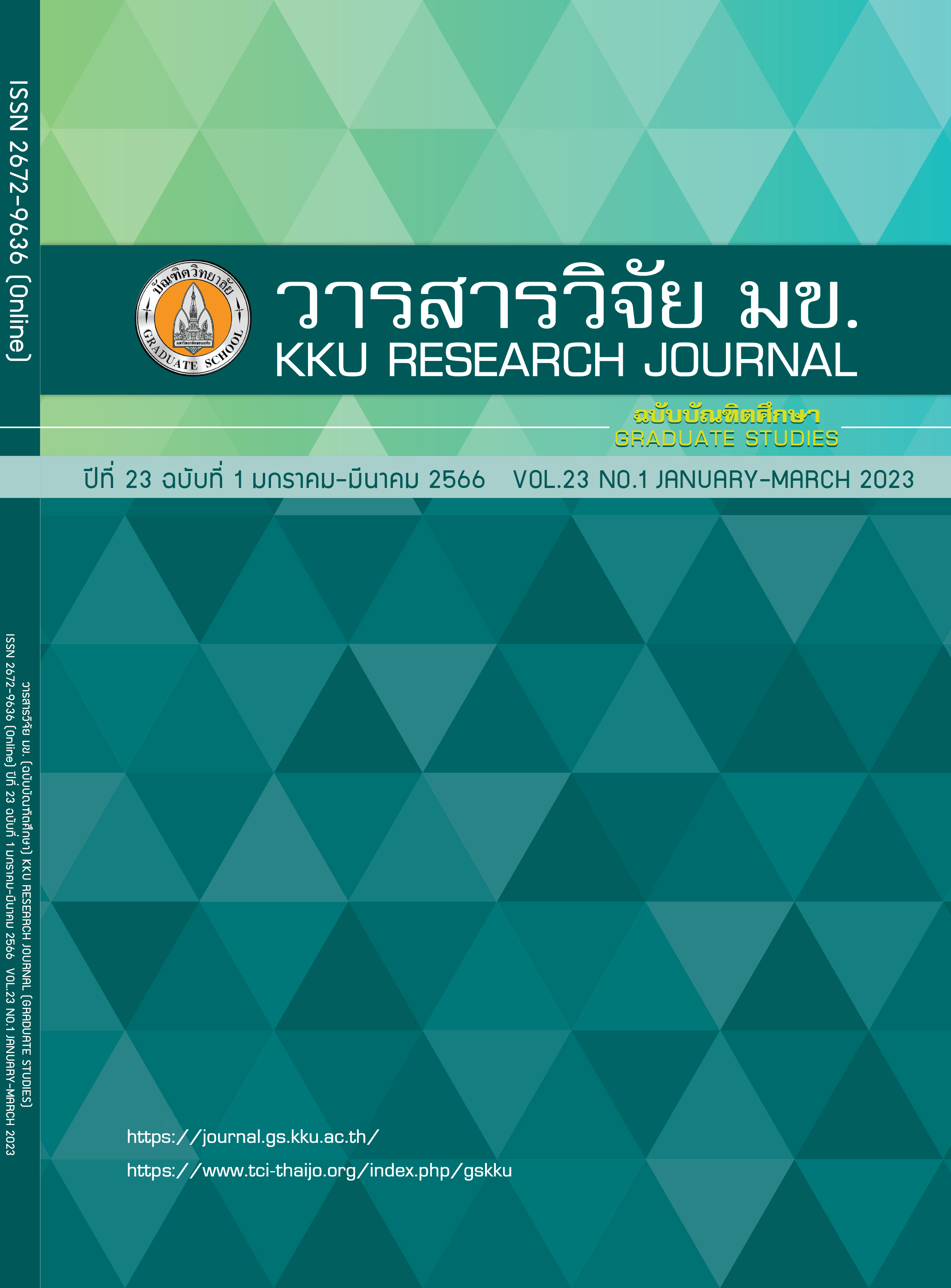Connections of Students' Mathematical Representations in Problem-Solving Classroom
Keywords:
Mathematical representation, Connections of mathematical representations, Problem-solving classroomAbstract
This research aimed: 1. to explore students’ mathematical representation in the problem-solving classroom and 2. to analyze connections between students’ mathematical representations in the problem-solving classroom by using qualitative research methods that emphasized analytic description and protocol analysis.The target group was 11 students in grade 5 in the academic year 2021 in Banbungniambungkrinoonthahin School. The research instruments consisted of lesson plans of decimal multiplication, Zoom application, Worksheet, field notes, and interview form. The result found that 1. Students use mathematical representations to convey concepts and understand 4 types as follows: 1.1 Spoken Verbal Symbols Representation 1.2 Real Life Situations Representation 1.3 Pictures Representation 1.4 Written Symbols Representation but did not find Manipulative Aids Representation and 2.Found the connection between Spoken Verbal Symbols Representation, Real Life Situations Representation, Pictures Representation, and Written Symbols Representation.
References
Shimizu S. Professional development through lesson study: A japan case paper presented at APEC International symposium on innovation and good practice for teaching and learning mathematics through lesson study. Khonkaen: Khonkaen Publisher; 2021.
Inprasitha M. Process of problem-solving in school mathematics. Khonkaen: The Centre for Research in Mathematics Education; 2014. Thai.
Isoda M, Nakamura T. Mathematics education theories for lesson study: problem-solving approach and the curriculum through extension and Integration. JMSJ. 2010; 92(5): 31-50.
Inprasitha M. Reform process of learning mathematics in schools focusing mathematical process. Khonkaen: Khonkaen Publisher; 2003. Thai.
Nohda N. Teaching by the open-approach method in the Japanese mathematics classroom. In: Csikos C, Rausch A, Szitanyi J, editors. Proceeding of the 24th Conference of the International Group for the Psychology of Mathematics Education (PME 24); 2000 July 23-27; Hiroshima University. Hiroshima: Hiroshima Japan; 2000. p. 39-54.
Tall D. Compressing mathematical processes: The theory of procepts [Internet]. 2004 [updated 2010 January 4; cited 2022 Feb 18]. Available from: http://www.tallfamily,Co.uk/david/ mathematical-growth/09.procepts-in arithmetic.pdf.
Makhanong A. Skills and mathematical processes development for development. Bangkok: Chulalongkorn University Press; 2010. Thai.
House A Peggy, Coxford F Arthur. Connecting mathematics across the curriculum yearbook. Virginia: National Council of Teacher of Mathematics; 1995.
National Council of Teachers of Mathematics (NCTM). Principles and standards for school mathematics. Virginia: National Council of Teachers of Mathematics; 2000.
Despina A. An examination of middle school students’ representation practices in mathematical problem solving through the lens of expert work: towards an organizing scheme. JMTE. 2010; 76(1): 265–80
Lesh R, Cramer K, Doerr H, Post T, Zawojewski J. Using a translation model for curriculum development and classroom instruction. JMSJ. 2003; 5(2): 211-33.
Kouba V, Franklin K. Multiplication and division: sense making and meaning. In: Jansen J, editor. Research ideas for the classroom early childhood mathematics. New York: Macmillan; 1993. p. 103-26.
Chung I, Lew H. Comparing Korean and US third grade elementary student conceptual understanding of basic multiplication facts. In: Woo J, Lew H, Park K, Seo D, editors. Proceeding of the 31st International Conference of the international group for the psychology of mathematics education; 2007 July 8-13; Seoul, Korea. Seoul: Korea Society of Educational Studies in Mathematics; 2007. p. 161-8.
Graeber A, Tanenhaus E. Multiplication and division: from the whole number to rational numbers. In: Owens T, editor. Research ideas for the classroom middle grade mathematics. New York: Macmillan; 1993. p. 99-117.
Nontapattamadul K. Qualitative research in social welfare: research concepts and methods. Bangkok: Bangkok Publisher; 2007. Thai.
Inprasitha M. Blended Learning Classroom. Khon kaen: Khon kaen Publisher; 2021. Thai.
Downloads
Published
Issue
Section
License
Copyright (c) 2023 KKU Research Journal (Graduate Studies)

This work is licensed under a Creative Commons Attribution-NonCommercial-NoDerivatives 4.0 International License.



